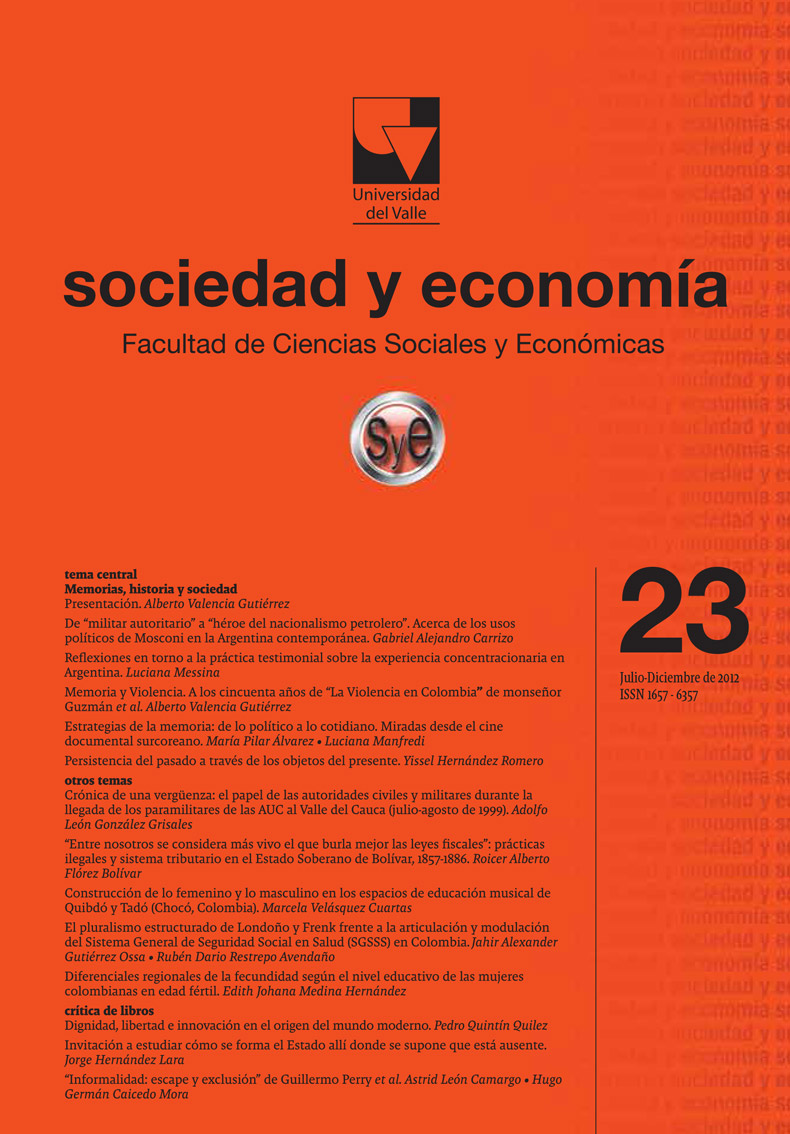Regional Fecundity Levels for Colombian Women of Childbearing Age According to Educational Level
Published:
2012-07-15
Keywords:
Demographic Transition, Fecundity Transition, Women in Reproductive Age, Colombia ENDS 2010.Main Article Content
Fecundity is a component of the demographic dynamics that determines population growth. In Colombia, like in most Latin American countries, fecundity has significantly decreased in the latest decades, due to the increase of women´s educational levels, among others factors; also, fecundity decrease presents differences by geographical areas of residence.This article presents fecundity estimators, according to educational levels, for women in reproductive age who responded the 2010 Demography and Health National Survey (ENDS 2010). By means of the Brass method, with Coale and Trussell Variant to calculate regional estimators, the article pretends to show similarities and differences in the contribution that these women have made to the process of fecundity transition in Colombia.
1.
Medina Hernández EJ. Regional Fecundity Levels for Colombian Women of Childbearing Age According to Educational Level. soc.eco [Internet]. 2012 Jul. 15 [cited 2026 Jan. 2];(23):205-34. Available from: https://sociedadyeconomia.univalle.edu.co/index.php/sociedad_y_economia/article/view/3993
Downloads
Download data is not yet available.

This work is licensed under a Creative Commons Attribution-NonCommercial 4.0 International License.
Revista sociedad y economía editada por la Facultad de Ciencias Sociales y Económicas de la Universidad del Valle se encuentra bajo una Licencia Internacional Creative Commons Atribución - No comercial 4.0
Basada en una obra en http://sociedadyeconomia.univalle.edu.co

